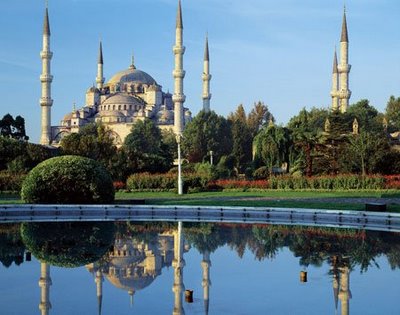Transformation and reconstruction of BaiHua public garden: Alternative planning for complex objectives, China: Difference between revisions
| Line 39: | Line 39: | ||
*''BaiHua Park is an ordinary public garden in Jining City. In its 20 years history from the 1990's, it has been looked as an simple-use open space and divided into several parts by different authorities.The renewal of this garden started from 2007, and is still ongoing. What will the BaiHua park be? From the mayor and the local administration's perspective, it should be an indispensable part of the Harmonious Society.For citizens nearby, it should be their playground for morning exercises and fitnesses. From the ecologist's view,it should be a habitat and shelter for indigenous species and creatures.For the garden's managers, it should be a park easy to operate and without additional management and money. And for us designers,it should be a cultural landscape adapting to the fast urbanization and the climate change. | *''BaiHua Park is an ordinary public garden in Jining City. In its 20 years history from the 1990's, it has been looked as an simple-use open space and divided into several parts by different authorities.The renewal of this garden started from 2007, and is still ongoing. What will the BaiHua park be? From the mayor and the local administration's perspective, it should be an indispensable part of the Harmonious Society.For citizens nearby, it should be their playground for morning exercises and fitnesses. From the ecologist's view,it should be a habitat and shelter for indigenous species and creatures.For the garden's managers, it should be a park easy to operate and without additional management and money. And for us designers,it should be a cultural landscape adapting to the fast urbanization and the climate change. | ||
The uniqueness of this case is that it has multi-expectations and complex goals.The planning will show us a programme coordinating different communities and solving so much problems.'' | The uniqueness of this case is that it has multi-expectations and complex goals.The planning will show us a programme coordinating different communities and solving so much problems.'' | ||
Revision as of 08:07, 10 June 2010
| Name | BaiHua Public Garden | |
| Place | Jining City,Shandong Province | |
| Country | China | |
| Author(s) | John Sun and Ya Li | |
| Project start | 2007.07 | |
| Completion | enter the date of completion | |
| World Heritage | No | |
| Client | Jining urban planning design and research institute | |
| Project costs | enter the costs (if known) | |
|
<googlemap version="0.9" lat="35.414061" lon="116.601934" zoom="10" width="400" height="300" controls="small">35.412487, 116.604424Baihua Public Garden</googlemap> | ||
Rationale: Why is the case study interesting?
- BaiHua Park is an ordinary public garden in Jining City. In its 20 years history from the 1990's, it has been looked as an simple-use open space and divided into several parts by different authorities.The renewal of this garden started from 2007, and is still ongoing. What will the BaiHua park be? From the mayor and the local administration's perspective, it should be an indispensable part of the Harmonious Society.For citizens nearby, it should be their playground for morning exercises and fitnesses. From the ecologist's view,it should be a habitat and shelter for indigenous species and creatures.For the garden's managers, it should be a park easy to operate and without additional management and money. And for us designers,it should be a cultural landscape adapting to the fast urbanization and the climate change.
The uniqueness of this case is that it has multi-expectations and complex goals.The planning will show us a programme coordinating different communities and solving so much problems.
Author's perspective
- What theoretical or professional perspective do you bring to the case study? Please make a short note on your personal background
Cultural landscape context
- Biogeography, cultural features, overall landscape character, history and dynamics
Illustration: Map; sketches; short descriptive analyses
Socio-political context
- Brief explanation of political economy, legal framework
Illustration: Bullet points, image, background notes
Spatial analysis of area/project
- What are the main structural features?
- How has it been shaped? Were there any critical decisions?
Illustration: Map/diagram/sketches photos and background notes
Analysis of idea/program/function ("Planning Objective")
- What are the main functional characteristics?
- How have they been expressed or incorporated?
Illustration: Map/diagram/sketches photos and background notes
Analysis of design/planning process ("Process Biography")
- How was the area/project formulated and implemented?
- Who initiated the project and why?
- Which stakeholders have been involved?
- Who made the major decisions and when?
- Were there any important consultations/collaborations?
Illustration: Map/diagram/sketches photos and background notes
Analysis of use/users
- How is the area/project used and by whom?
- Is the use changing? Are there any issues?
Illustration: Map/diagram/sketches photos and background notes
Future development directions
- How is the area/project evolving?
- Are there any future goals?
Illustration: Map/diagram/sketches photos and background notes
Peer reviews or critique
- Has the area/project been reviewed by academic or professional reviewers?
- What were their main evaluations?
Please add references, quotes...
Successes and limitations
- What do you see as the main successes and limitations of the area/project?
Illustration: Summary table
What can be generalized from this case study?
- Are there any important theoretical insights?
Short statement plus background notes
What research questions does it generate?
Short statement plus background notes
Image Gallery
- Http://hiphotos.baidu.com/СǬ¡519/pic/item/74e44d0848962eb52eddd4a3.jpg
your image text and source
- Http://img211.poco.cn/mypoco/myphoto/20080903/22/11116714200809032215138769541282917 002.jpg
your image text and source
- Yourimage.jpg
your image text and source
- Yourimage.jpg
your image text and source
- Yourimage.jpg
your image text and source
- Yourimage.jpg
your image text and source
- Yourimage.jpg
your image text and source
- Yourimage.jpg
your image text and source
References
- Author Year: Title, publisher, edition, page, ...
- etc.
- Website Year: Link, keyword, ...
- etc.
